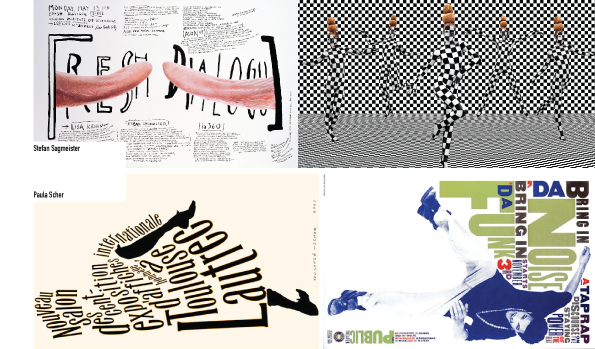PERSPECTIVE II: ART ED TO TEACH DESIGN THINKING
PERSPECTIVE III: ART ED TO TEACH ENTREPRENEURSHIP

Each year, Print Magazine names a list of New Visual Artists (NVAs) to watch. The NVAs are illustrators and graphic designers in their mid twenties, and almost none graduated from the "right schools." No RISD. No Yale or CMU. Instead, they rocketed to design stardom from art programs you haven't heard of.
At Springfield State Art Institute or wherever, the NVAs produced art that dazzled potential clients. Then clients commissioned these kids to produce more dazzling art, and success built on success until Print declared their work buzz-worthy. An NVA-in-the-making could choose any college as a launchpad.
Not only that, but you could plausibly argue that if RISD graduates more success-destined graduates than Springfield State, this is because RISD enrolls more success-destined entrants. And had those RISD kids attended Springfield State, they would have reached the same career heights. Thus the argument goes that RISD does not excel at training remarkable designers, but choosing top designers and then accepting credit for their success.
I don't mean to pick on RISD. It's a stand-in for any top school. The point is: top art students need not depend on a highly-ranked program to launch their careers. Thousands of teachers and professors know enough and care enough to get their best students career-ready.
There's a flip side: When a student graduates with an average portfolio, an impressive alma mater won't compensate. Students need to hustle-- they better generate work that turns heads; they better create something worth talking about. Otherwise, they're invisible. Too many outstanding artists live in New York. The merely competent ones never find satisfying clients. Seth Godin says, "Safe is the most dangerous thing you can be."
In the arts, if you're good, you get bad results. How's that for fair? If you're very good, you get okay results, okay pay, and okay clients. And that's where some people say, "Is this all there is?" That's where they give up. But if you imagine a continuum, where down at your feet is bad and the top of your head is very good, outstanding is just an inch over your head. That's where all the fun is.
You'd think all students able to consistently generate outstanding work would have core competencies:
- Formidable color sense
- Superhuman drafting skills
- Legendary talent for directing the viewer's eye
Yet, I'll concede that more than a few artist/designers strike it rich without the core competencies. James Victore and Stefan Sagmeister would tell aspiring artists to jettison plans to master color, drafting, and composition. "Use what you have," they'd say. "Find what makes you weird, and let it lead you." Sagmeister lives his own advice-- he once asked his assistant to knife words into his skin, which he famously photographed to promote a design conference.
If spectacular skill is one rocket to a satisfying design career (the Marian Bantjes route), then outrageous, shocking fearlessness is another (the Stefan Sagmeister route). From a distance, you see these design heroes turning down work they don't find fascinating, charging high consultation fees, and in Sagmeister's case, setting aside one year every seven for reflection and relaxation.

When Clem Greenberg first saw Pollock's splatter paintings, he told him, "I didn't know an artist could do that!" Pollock pushed against the boundaries of art. Paula Scher exclaimed the same thing at Tyler School of Art, when her professor floated the idea she should toss out the Helvetica grid and illustrate her own letterforms. (See above)
What do outstanding artist/designers have in common? They change the way their audience thinks about art. To be outstanding is to literally change your audience's sense of what's possible. Students must understand the difficulty and the value of achieving this feat. So a hypothetical photography class would be shown the graph below, and then lead from stage 1 to stage 4. They'd look back at the chart and see they've broken through the barrier to entry for non-professionals.

Thousands of art teachers know enough and care enough to cultivate an outstanding artist. They do this by surprising students, by pushing them to produce work they didn't know they could make. They do this by teaching them good taste and attention to detail. They do this by linking good emotions to taking risks and, with great focus, pushing beyond amateur art. They're treasure hunters seeking diamonds in the rough. Here is the first purpose of art education.
Continue to Part 2

No comments:
Post a Comment